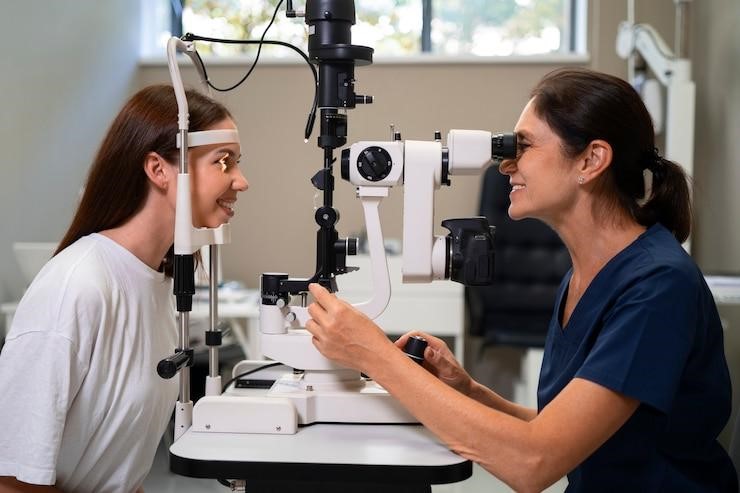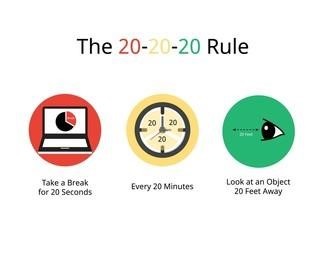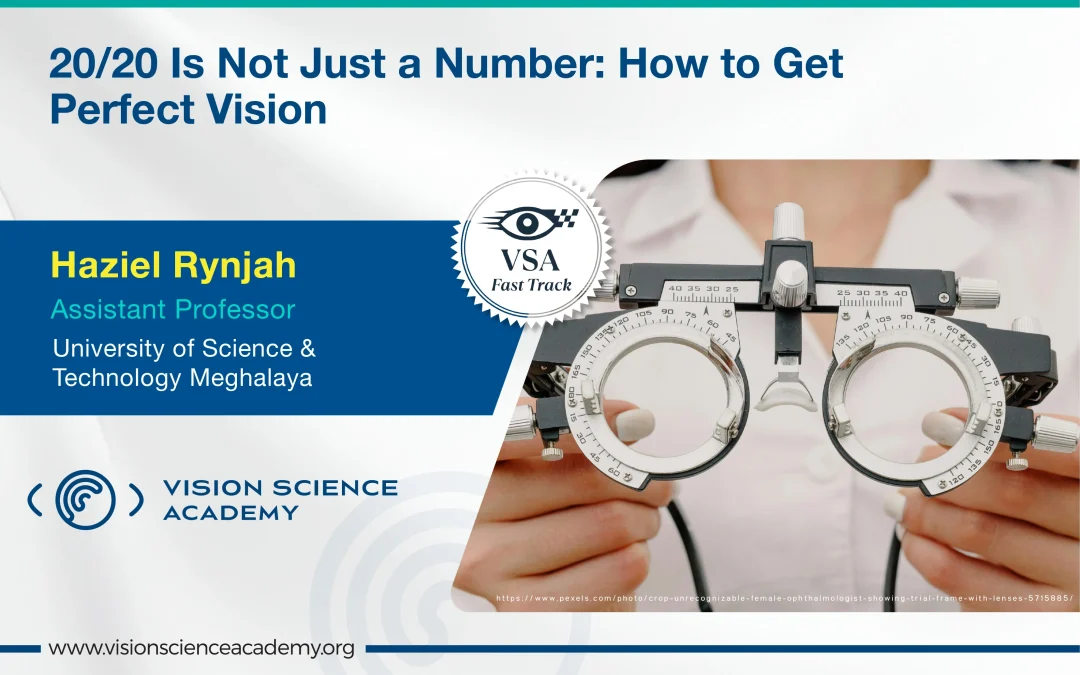Haziel Rynjah, M.Optom.
Assistant Professor, University of Science and Technology Meghalaya, Baridua, India
We have all heard the phrase “20/20 vision” thrown around as the gold standard for eyesight. However, did you know that 20/20 does not mean perfect vision; it simply refers to the clarity or sharpness of your sight at 20 feet? Perfect vision, however, includes not just sharpness, but also good peripheral vision, depth perception, colour vision, and the ability to see well in various lighting conditions. (1,2)
In today’s world, where digital screens, poor lighting, and busy lifestyles impact our eyes daily, maintaining crystal-clear vision takes effort. Fortunately, there are real, practical steps you can take to not only achieve but also preserve healthy vision for life.
How to Get Perfect Vision
1. Start with Regular Eye Exams
Eye health begins with awareness. Many serious eye diseases, like glaucoma, diabetic retinopathy, and macular degeneration, show no early warning signs. That is why yearly visits to an optometrist are essential for early detection and the prevention of lasting vision damage. (3) These visits help detect silent threats before they cause irreversible damage, and they ensure your vision prescription remains accurate and up to date.

Figure 1: Image representing Regular Eye Examination in an Optometry Clinic
2. Defend Against Digital Eye Strain
With so much time spent on screens, digital eye strain has become a modern epidemic. Try following the 20-20-20 rule every 20 minutes, look at something 20 feet away for 20 seconds to help reduce common symptoms like dryness, blurred vision, and headaches. (4) Adjusting screen brightness, increasing blink rate, and using blue light filters can also reduce strain. Do not forget to blink more often to keep your eyes moist and comfortable. (5)

Figure 2: 20-20-20 Rule
3. Nourish Your Eyes
What you eat directly affects your eye health. Foods rich in vitamin A, C, E, and omega-3 fatty acids, such as leafy greens, carrots, eggs, and fatty fish, support retina function and reduce the risk of age-related vision decline. (6) Staying hydrated is equally important to prevent dry eye syndrome.
4. Update Your Lenses
Outdated glasses or contact lenses can cause discomfort and place unnecessary strain on your eyes. Ensure your prescription is up to date and consult with your optometrist about options such as blue light protection or anti-reflective coatings if you spend a lot of time on screens. (7) Consider lens upgrades, such as anti-reflective coatings or blue light protection, especially if you spend long hours in front of screens.
5. Explore Vision Correction Options
For those seeking long-term solutions, procedures like LASIK or orthokeratology (overnight lenses) can help achieve independence from glasses or contacts. (8) However, not everyone is a candidate, so consult a licensed eye care professional to explore what’s best for you.
Conclusion
Having 20/20 vision is not just about reading the smallest line on the chart; it is about making daily choices that support your long-term eye health. From regular exams and smart screen habits to nutrition and vision correction options, taking charge of your eye care today ensures you will continue seeing life tomorrow. Remember, 20/20 is not just a number; it is a commitment to seeing your best every single day.
References:
- Casella, B. P. (2020). Contrast sensitivity manifests in glaucoma patient with no cataracts.
- Schanda, J. (2006). Light, vision, and color, by Arne Valberg, John Wiley & Sons, Ltd., 2005, 464 pp.; I hardback 160,paper 79. ISBN 0‐470‐84903‐7.Boulet, C. (2016). The ‘20/20/20 rule’–When good intentions and axiomatic habit displace best practices. Canadian Journal of Optometry, 78(4), 6-6.
- Johnson, S., & Rosenfield, M. (2023). 20-20-20 rule: are these numbers justified?. Optometry and Vision Science, 100(1), 52-56.
- Rodriguez, J. D., Lane, K. J., Ousler III, G. W., Angjeli, E., Smith, L. M., & Abelson, M. B. (2018). Blink: characteristics, controls, and relation to dry eyes. Current Eye Research, 43(1), 52-66.
- Nazrana, N., Jain, T., & Verma, S. (2020). Role of nutrition in maintaining normal eyesight-a review. Int J Med Biomed Stud, 4(3), 194-8.
- Petrenko, O. (2023). Eyeglass Lens Coatings (Anti-reflective, Blue Light Blocking). Literature Review (Doctoral dissertation, Vilniaus universitetas.).
- Farooq, A., Giri, P., & Azar, D. (2020). Striving for perfect vision: Insights from refractive surgery. Foundations of Corneal Disease: Past, Present and Future, 159-184
Figure 2: https://www.google.com/url?sa=i&url=https%3A%2F%2Fwww.shutterstock.com%2Fsearch%2F20-20-20-vision


Recent Comments